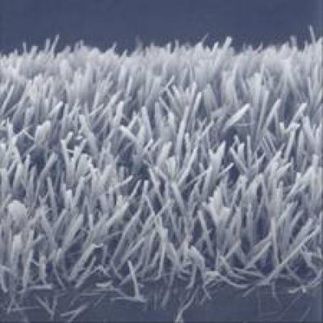International team of nanotechnology investigators devise a new way to control the motion of tiny particles
Advertisement
nanotechnology researchers may soon be able to design new types of tiny shuttles or conveyor belts which could be used to deliver medications to specific cells or to replace wires in molecular-sized electronic devices.
An international team of investigators, including a physicist from the University of Michigan, has devised a method that could help researchers with one of the most challenging problems in nanotechnology: controlling the motion of tiny particles, both in artificial nanodevices and biological systems such as ion channels in cell membranes.
Very tiny particles exhibit disordered motion, also known as Brownian motion, because they are subject to thermal noise. Learning how to transform this disordered wandering of molecules and small particles into ordered, directed motion is a major thrust in nanotechnology research.
In a paper scheduled to be published in Physical Review Letters on July 4, a multinational research team has proposed a novel way to control the motion of tiny particles. "Controlling transport in mixtures of interacting particles using Brownian motors," by Sergey Savel'ev (Institute of Physical and Chemical Research, RIKEN, Japan), Fabio Marchesoni (Physics Department, Universita di Camerino, Italy and RIKEN) and Franco Nori (Center for Theoretical Physics, University of Michigan and RIKEN), shows how adding "auxiliary" particles that interact with the primary "target" particles can both control and enhance the flow for both.
Ratchets, or asymmetrically shaped sawtooth substrates, can be used to make particles flow in one direction instead of wandering at random. However, this goal can be difficult to achieve when the mobile particles are weakly coupled to the underlying asymmetric substrate, which is not easily tunable.
These particles can be ions or molecules. In other words, particles that are weakly coupled to a substrate (passive particles) can be better controlled by adding a second type of active particles which couple better to the substrate.
For example, if the passive species repels the active one the two will drift in opposite directions. If, on the other hand, the species attract each other, the active species can drag the passive one along. This indirect rectification of the particles' motion could be used to deliver or to remove passive ingredients from a cell or from an artificial micro-structure like a molecular-scale device. These new types of tiny shuttles or microscopic conveyor belts would act as entirely new types of "wires," replacing standard wires in some new nanodevices.
According to the authors, injecting an appropriate density of passive particles can control the velocity of active particles, and vice versa. In addition, they prove that an attracting (or repelling) interaction among identical particles can result in the amplification (or inversion) of their net current.
































































